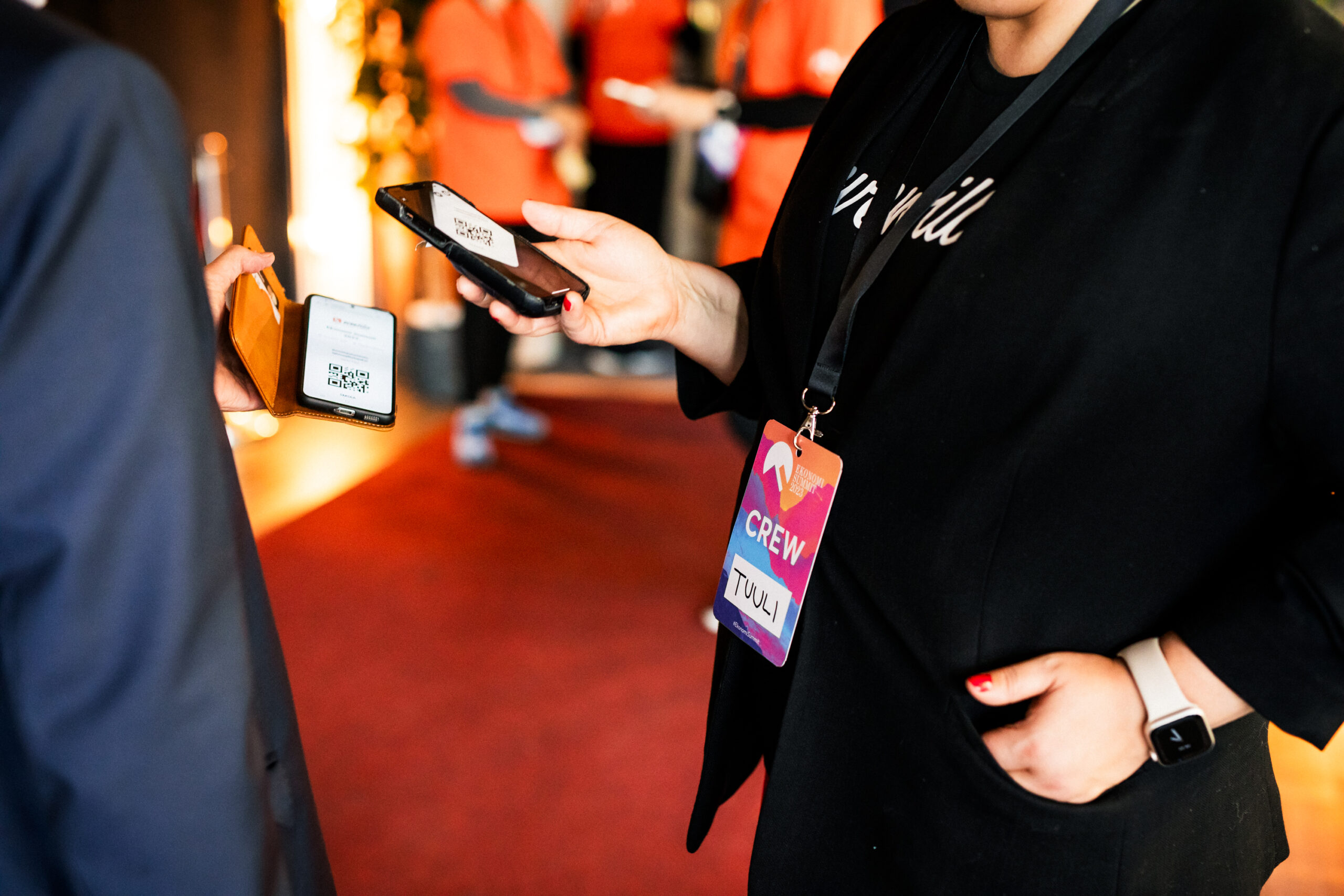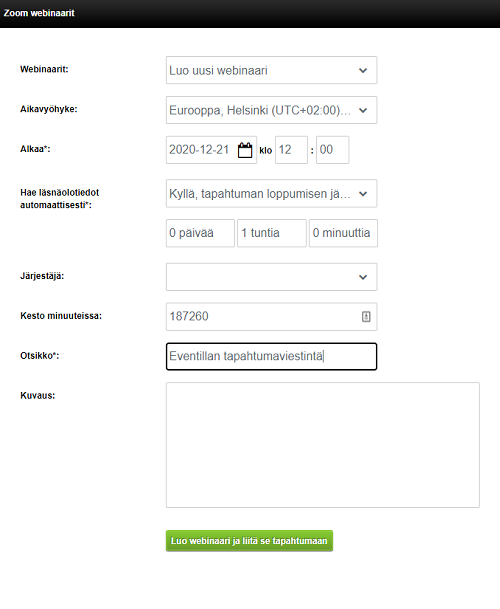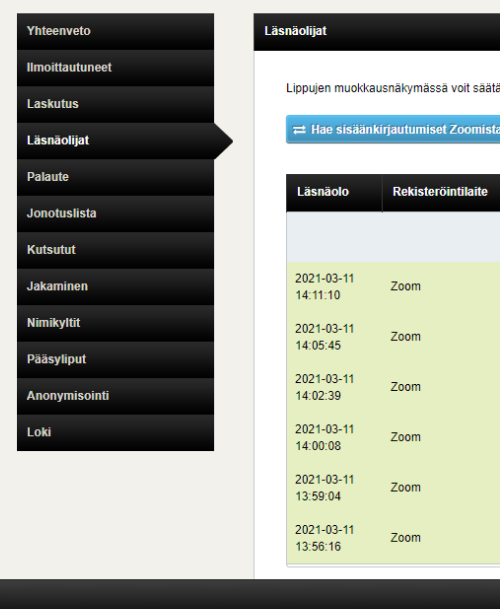
Every event organiser does their best when planning and executing an event. All organisers hope that participants enjoy themselves — and even gain something valuable. But organising a great event isn’t easy! A well-designed event feedback survey ensures that continuous improvement takes place.
In a previous blog post, I wrote about using NPS (Net Promoter Score) as a measure of event success, so we won’t dive deeper into that here. If you want to turn your events into true gems, it’s worth asking for feedback on a more concrete level.
In this article, we’ll go through:
- What kind of things you should ask feedback about
- And give you tips to ensure you actually get responses!
How to build an effective feedback survey for your event?
A feedback survey shouldn’t be too long — but it should still provide enough information to develop your future events. You can ask for feedback on, for example:
1. Event communications
Was your communication clear and timely? Was enough information provided, and was it easy to find the necessary details?
People today navigate a constant flood of information, so timely and engaging communication plays a crucial role. Inboxes fill up with newsletters and urgent to-dos, so a single message about your event can easily get buried. It’s wise to ask your participants whether they felt your communication was sufficient.
Did you receive negative feedback about event communications?
2. Technical execution
Especially in virtual and hybrid events, technology makes all the difference. Did the audio cut out? Was the video or shared screen quality good all the time?
Even the best preparation doesn’t always prevent technical hiccups, but you should aim for solid quality in the basics. In virtual events, participants’ focus can slip easily — and a grainy image or crackly sound won’t help. Be sure to ask your attendees how they experienced the technical quality. If there were issues, don’t worry — fixing them doesn’t have to be expensive. Quality microphones and cameras are nowadays quite affordable, and renting is always an option worth considering.
3. Speakers and presenters
Charisma and presentation experience matter. Did a particular speaker truly captivate the audience?
Practice makes perfect, so you should definitely ask for feedback on the presenters. Someone might speak too fast out of nervousness, while another might ramble too long about their favourite topic. Deep expertise doesn’t automatically make someone the best live presenter — consider involving natural speakers from your team or network.
4. Open-ended questions
What bothered or annoyed participants? Were there any positive surprises?
Give respondents the opportunity to express themselves freely. Especially if someone has critical feedback, they’ll likely want to share it directly with the organiser. And how disappointing would it be if they faced a tightly structured survey that didn’t allow them to comment on what frustrated them?
How to encourage participants to give feedback?
- Ask for feedback immediately after the event
- Tell during the event that feedback will be requested
- Make giving feedback as easy as possible
- Explain why the feedback is being collected
- Reward participants if necessary
Even the most beautiful feedback survey is useless if no one responds. There’s no guaranteed way to make every participant share feedback, but there are a few common pitfalls you can avoid to increase your chances of success.
Let’s take a look at the best practices!
1. Ask for feedback immediately after the event
For large festivals, a feedback survey can be sent a few days after the event, as the memories will likely stay fresh for a while.
But if you’re organising training sessions, courses, or webinars – which might not be quite as memorable as summer festivals – send the feedback survey immediately after the event ends.
Tip: Reserve a few minutes at the end of your event for participants to fill out the feedback survey. In a virtual event, share the survey link in the chat. On-site, make it possible to respond via QR code on mobile.
2. Tell during the event that feedback will be requested
Remember to inform participants during the event that you’ll be asking for feedback afterwards. Simply saying it out loud can motivate people to respond more actively — and they’ll be expecting that email to arrive later.
3. Make giving feedback easy
Filling out the survey shouldn’t take too long. Even if you’d love to ask about every part of your event, keep the feedback survey short and focused. Choose just a few key areas you want feedback on.
If you organise similar events regularly, you can rotate the survey topics every now and then!
4. Explain why you’re asking for feedback
It might seem obvious to write that feedback is used to improve future events — but it’s still smart to genuinely explain why participants should take time to help the organiser. Make it clear how their input makes a difference.
5. Reward participants if necessary
If it’s difficult to get participants to respond, try motivating them with a small incentive. For example, you can raffle tickets to your next event or gift cards among those who give feedback — depending on your audience. At best, the resources you use to encourage feedback aren’t a cost, but an investment in developing better events in the future.
When requesting feedback, remember the visual look of your survey as well. The easiest way is to use a ready-made feedback tool where the survey automatically matches your brand.
It’s also important that the feedback report is easy to read — that way, you can truly make use of the insights.
If you’re looking for a stylish and simple way to collect event feedback, take a closer look at Eventilla Surveys.
About the author
Kirjoittajasta





















